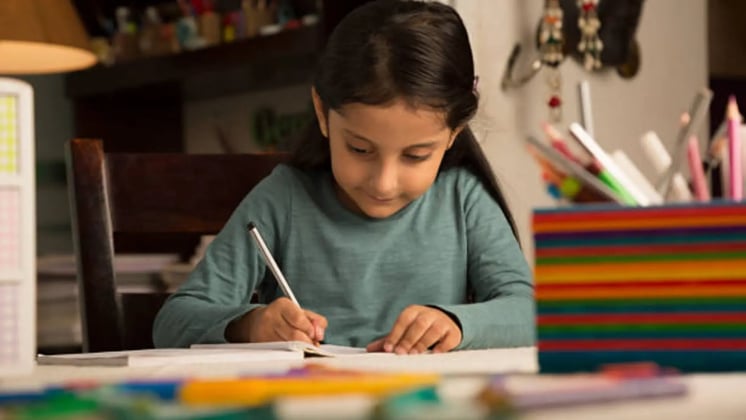- Turn Shapes into Everyday Objects
- Create Animals from Shapes
- Build Landscapes with Layers of Shapes
- Experiment with Shape Collages
- Use Repeating Shapes for Patterns and Designs
- Tell Stories Through Shape Characters
- Explore 3D Art with Paper Shapes
Introduction
Art doesn’t always start with big ideas or complicated strokes; sometimes it starts with the simplest of shapes. A circle can be a sun, a triangle a mountain, a few rectangles a city skyline. For kids, learning to see shapes not as shapes but as building blocks of creativity opens up endless imagination. It’s a way to combine learning with expression and show how something basic can become beautiful.

Using shapes as the base of art helps kids understand balance, proportion and design and improves focus and hand-eye coordination. But more importantly, it allows them to experiment without fear of mistakes. A misplaced line or an uneven circle is just a new creation. That freedom builds confidence and encourages creative thinking that goes way beyond the drawing page.
Parents and teachers can encourage this process with simple activities, from shape tracing and collage to doodling stories with only geometric shapes. Each exercise helps a child observe, imagine and problem solve. Turning simple shapes into art reminds kids that creativity is about perspective. With a few lines and curves they learn that even the simplest beginnings can become masterpieces.
7 Ways To Teach Kids That Simple Shapes Can Turn into Amazing Art

Every artist begins with something simple, a pencil stroke, a curve, or a dot. For children, that starting point often comes through shapes. A few circles, triangles, and squares can form the foundation of creativity that leads to colorful, imaginative masterpieces. The best part is that simple shapes make art accessible for everyone, even those who think they “can’t draw.”
Shapes are tools for storytelling and design. From building animals out of circles to designing homes with rectangles and triangles, shapes teach children how to see patterns and form ideas visually. This kind of creative thinking not only builds artistic confidence but also sharpens observation, problem-solving, and motor skills.
Here are seven engaging and imaginative ways simple shapes can transform into amazing works of art.
Turn Shapes into Everyday Objects
Start with basic shapes and challenge yourself to find everyday objects in them. A triangle could become an ice cream cone, a rectangle might turn into a gift box, or a circle could become a balloon. This exercise strengthens a child’s ability to visualize and think creatively, helping them turn imagination into tangible ideas.
Create Animals from Shapes
Drawing animals using simple shapes is one of the most enjoyable ways to combine learning and art. For instance, a cat can begin with a circle for the head, triangles for ears, and ovals for the body and paws. This activity teaches children about form and proportion while encouraging observation of the natural world. It’s playful, educational, and endlessly creative.
Build Landscapes with Layers of Shapes
Children can use triangles for mountains, rectangles for houses, and circles for the sun to design landscapes. By layering shapes of different sizes and colors, they learn about perspective and balance in art. This also improves spatial awareness, showing how distance and size work together to create depth and beauty in a scene.
Experiment with Shape Collages
Cutting out colored shapes and arranging them into a collage teaches children how design and composition work. They can make abstract art, faces, or nature-inspired pieces. This hands-on activity improves fine motor skills and encourages decision-making as children explore which shapes and colors fit best together.
Use Repeating Shapes for Patterns and Designs
Creating art with repeating shapes, like circles, diamonds, or hexagons, introduces children to the concept of rhythm and pattern. They can design borders, mandalas, or even fabric-like prints. This approach helps develop patience, focus, and precision while showing that simplicity can lead to extraordinary detail.
Tell Stories Through Shape Characters
Children love storytelling, and using shapes to create characters adds an imaginative twist. A rectangle with arms can become a robot, while a circle with a hat might turn into a cheerful face. Adding eyes, emotions, and accessories helps kids bring these characters to life, merging creativity with communication and narrative skills.
Explore 3D Art with Paper Shapes
Encourage children to cut, fold, and glue paper shapes to create three-dimensional art. A series of circles can become a flower bouquet, or pyramids can form a mini city. This hands-on technique helps them understand geometry and structure while enhancing their tactile and spatial skills. It’s the perfect way to turn flat drawings into dynamic, touchable creations.
Conclusion

Simple shapes are the building blocks of creativity. They show children that art only needs imagination. Through circles, lines, and triangles, young minds learn to express ideas, tell stories, and see the beauty hidden in everyday forms. Encouraging kids to experiment with shapes builds not only artistic skill but also patience, confidence, and problem-solving abilities. So next time your child picks up a crayon or sketchbook, remind them, even a small circle has endless possibilities waiting to take shape. The art they create today from simple forms might just become the foundation of a lifelong creative journey.
Her love for storytelling began with reading her grandfather’s speeches, where Tarishi saw the power of words in creating lasting memories. Combining her passions for food and writing, she has turned her life into a fulfilling path of sharing stories that celebrate flavours and how food brings communities together.
The views expressed are that of the expert alone.
The information provided in this content is for informational purposes only and should not be considered a substitute for professional medical advice, diagnosis, or treatment. Always seek the advice of your physician or another qualified healthcare provider before making any significant changes to your diet, exercise, or medication routines. This is a sponsored article.
















